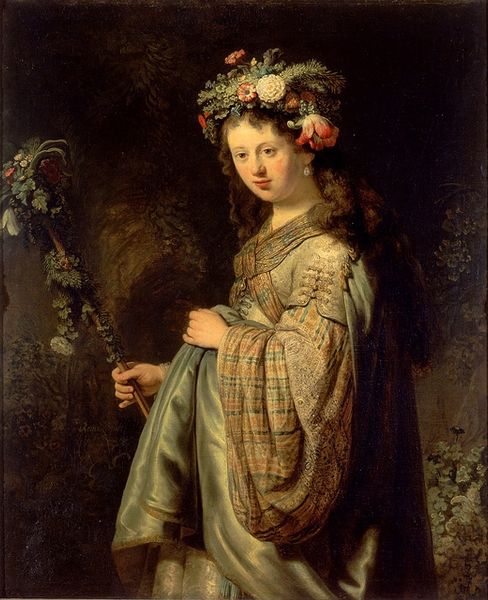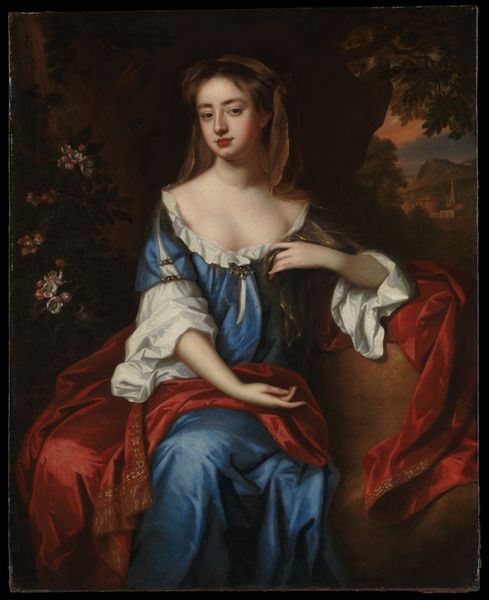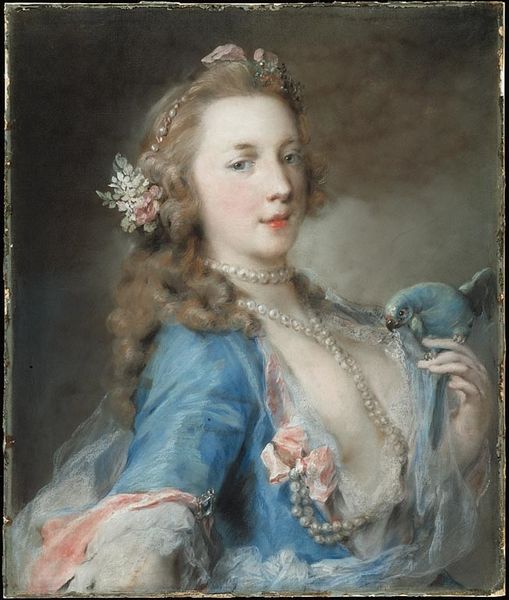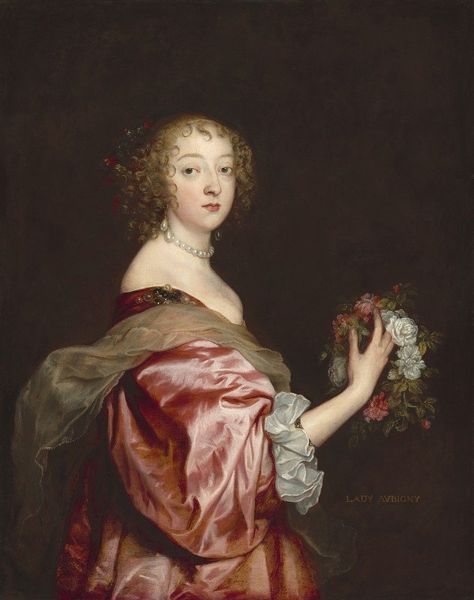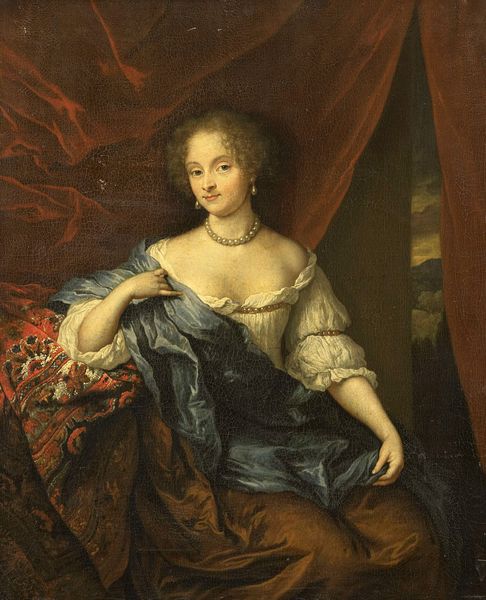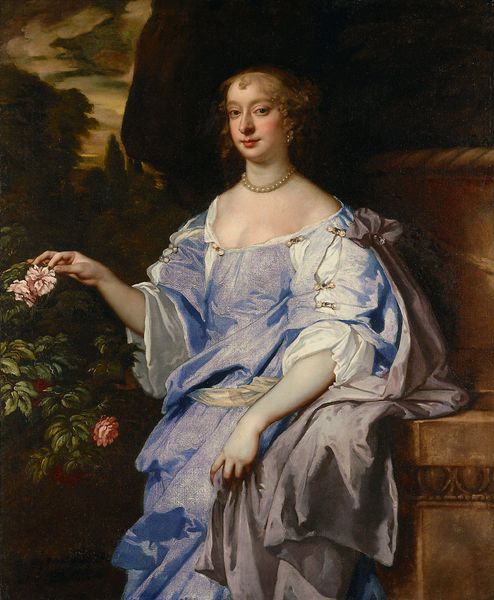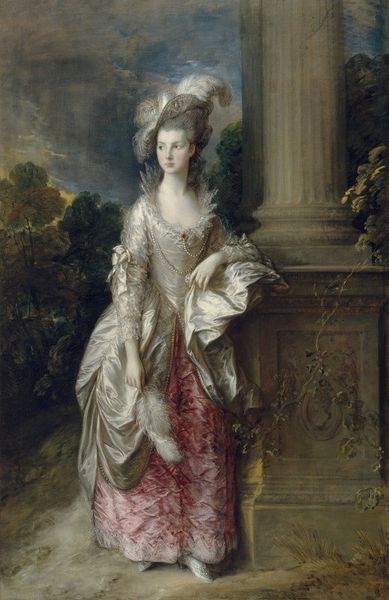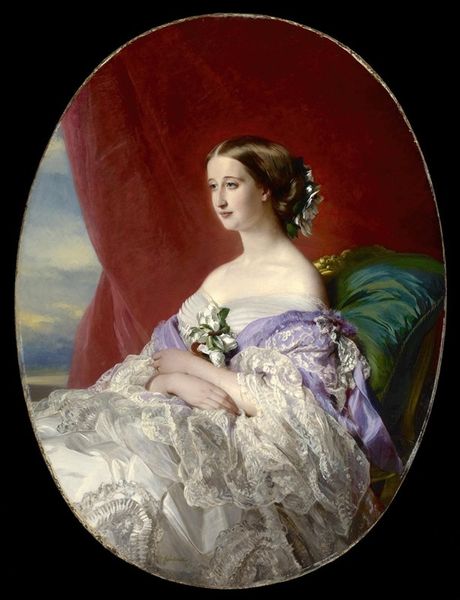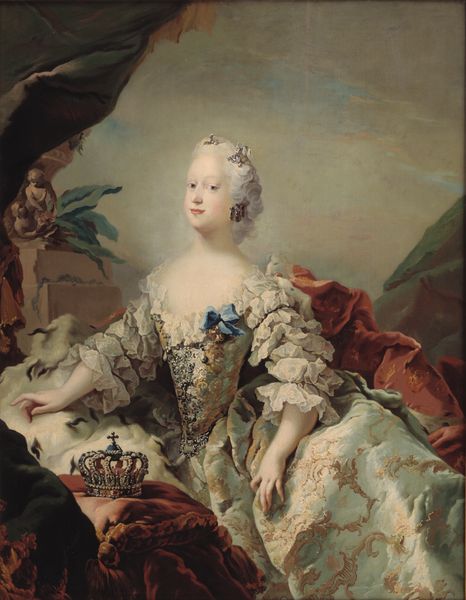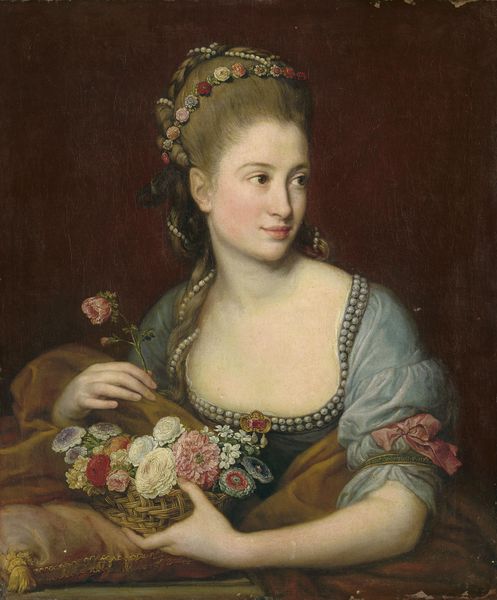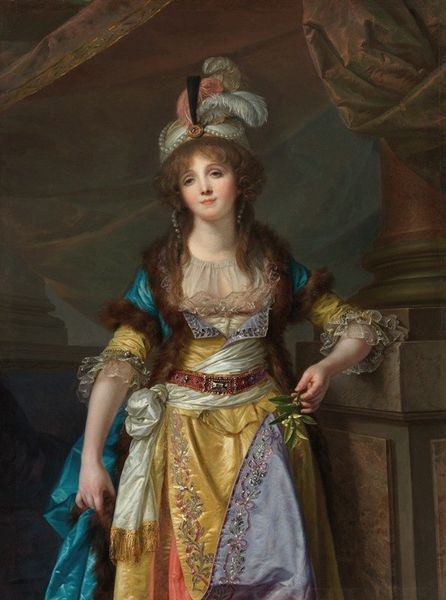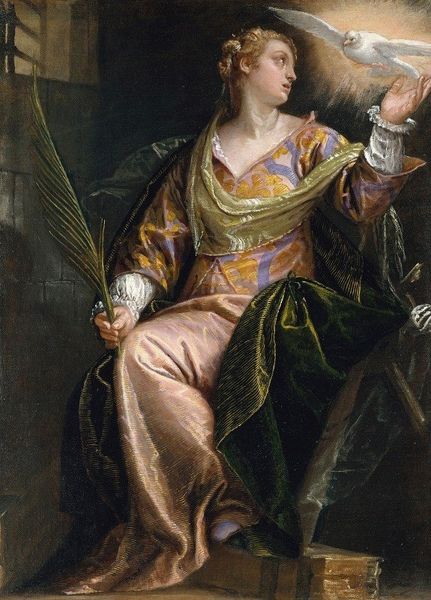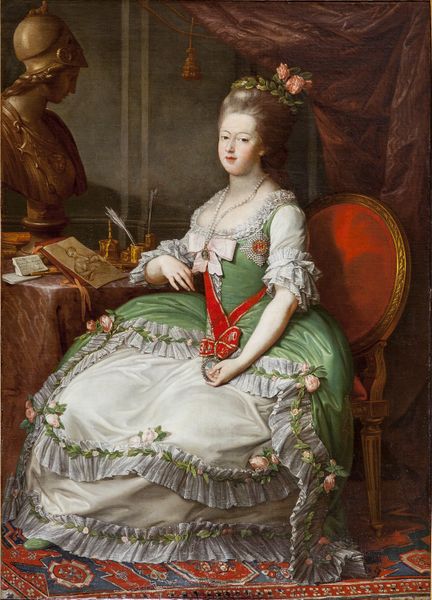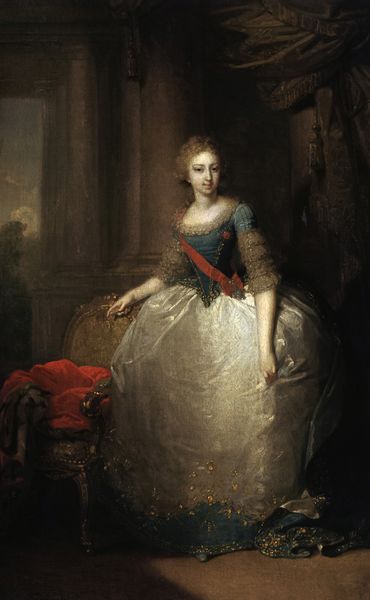
Portrait of a Woman, according to tradition Marie Louise Elisabeth d'Orléans (1695-1719), Duchesse de Berry, as Flora 1690 - 1740
0:00
0:00
nicolasdelargilliere
Rijksmuseum
painting, oil-paint
#
portrait
#
gouache
#
allegory
#
baroque
#
painting
#
oil-paint
#
oil painting
#
history-painting
#
nude
Dimensions: height 183.4 cm, width 140 cm, depth 3.8 cm, depth 1.6 cm, weight 60.5 kg
Copyright: Rijks Museum: Open Domain
Curator: What strikes me immediately is this figure wreathed in blossoms. It's almost overwhelming, but in a lovely way. Editor: And quite literally, wouldn't you agree? We're currently viewing "Portrait of a Woman, according to tradition Marie Louise Elisabeth d'Orléans... as Flora," crafted sometime between 1690 and 1740. Nicolas de Largillière is the artist. Curator: That cascade of roses definitely pegs her as Flora, the Roman goddess of springtime. It's a romantic idea of femininity, I think, kind of buried under all those layers of fabric and flowers. Is it romantic, or performative? I can't quite tell. Editor: Ah, the layering is essential! Look at how Largillière manipulates the fabric. The crisp folds of the blue drape, juxtaposed with the almost liquid shimmer of her gown... It creates depth but also directs the gaze. It is more than mere adornment. Semiotically, it denotes status and cultivates a sense of ethereal beauty, while the palette suggests opulence tempered by classical restraint. Curator: But it feels... caged. Almost like the flowers are consuming her. It makes me think of a gorgeous hothouse flower, bred for display rather than free to grow. Editor: Perhaps Largillière sought to capture the complex dance between nature and artifice prevalent during the Baroque. Note the deliberate composition; she is positioned centrally but slightly off-kilter in relation to the stone vase brimming with blooms. Is this dissonance intentional, a comment on the tension between the subject's "natural" self and her societal role? Curator: Could be. The idea of a woman, especially a noblewoman, as both a force of nature and a symbol of courtly control... It’s definitely there in her expression, that slight distance in her eyes. And that cinched waist; it echoes the vase’s curve, another kind of constraint. Editor: Precisely! Each element harmonizes and challenges our perception simultaneously. Curator: Makes you think, doesn't it? All those gorgeous surfaces hiding so much. Editor: A rewarding paradox of pictorial representation, wouldn’t you agree?
Comments
No comments
Be the first to comment and join the conversation on the ultimate creative platform.
